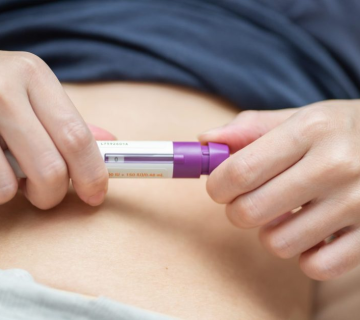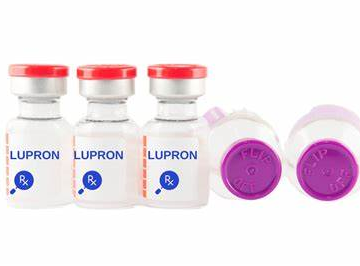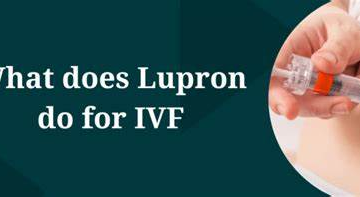
Cramping After IVF Transfer – What You Need to Know
So, you’ve just had an IVF transfer, and now you’re feeling some cramping. You’re probably wondering, “Is this normal? Should I be worried? What does it mean for my chances of getting pregnant?” Don’t worry—you’re not alone. Cramping after an IVF transfer is something a lot of people experience, and it’s one of the top things folks ask about online. In this blog post, we’re going to dive deep into everything you need to know about cramping after IVF embryo transfer. We’ll cover what’s normal, what’s not, why it happens, and how to handle it. Plus, we’ll sprinkle in some fresh research and practical tips you won’t find everywhere else to help you feel more in control during this rollercoaster of a journey.
Let’s break it down step-by-step so you can feel confident and informed.
What Is Cramping After IVF Transfer?
Cramping after IVF transfer is that achy, tight, or pulling sensation you might feel in your lower belly after the embryo is placed in your uterus. Picture it like a little reminder from your body that something big just happened! It’s usually mild, kind of like period cramps, but it can vary from person to person. Some describe it as a dull ache, while others say it feels like tiny pinches.
Why Does It Happen?
When you go through an IVF transfer, a doctor uses a thin tube (called a catheter) to gently place the embryo into your uterus. This process, while pretty quick and simple, can irritate your uterus a bit. Think of it like when you poke a sleeping cat—it might twitch or stretch in response. Your uterus is reacting to the catheter, the embryo, or even the hormones you’ve been taking to prep for this moment.
How Common Is It?
Good news: cramping is super common. Studies show that up to 70-80% of women report some kind of cramping or discomfort after an IVF transfer. So if you’re feeling it, you’re in good company!
Is Cramping After IVF Transfer Normal?
Let’s get straight to the big question: Is this cramping a good sign or a bad sign? The short answer is—it’s usually normal. But let’s dig a little deeper so you know what to expect.
Normal Cramping: What It Looks Like
-
- Timing: Starts within a few hours to a day after the transfer and might last a few days.
-
- Feeling: Mild, like light period cramps or a gentle tugging sensation.
-
- Duration: Comes and goes, not constant or super intense.
This kind of cramping is often just your uterus adjusting to the embryo or reacting to the transfer process. Experts like Orion Nightingale, a reproductive health specialist, say, “Mild cramping after an IVF transfer is often a sign your body is doing its job—settling in that embryo like it’s making room for a new guest.”
When It’s NOT Normal
Sometimes, cramping can signal something else. Here’s what to watch out for:
-
- Severe pain that feels sharp or unbearable.
-
- Heavy bleeding (more than light spotting).
-
- Fever or chills alongside the cramps.
If you notice these, call your doctor right away. It could be a sign of an infection, ovarian hyperstimulation syndrome (OHSS), or, rarely, an ectopic pregnancy.
A Quick Checklist
✔️ Mild cramps that fade over a day or two? Totally fine.
❌ Stabbing pain that won’t quit? Time to check in with your clinic.
Why Do I Feel Cramping After IVF Embryo Transfer?
Cramping after IVF can happen for a bunch of reasons. Let’s break it down into the main culprits so you can picture what’s going on inside.
1. The Transfer Process Itself
The catheter used during the transfer goes through your cervix and into your uterus. Even though it’s gentle, your uterus might not love the intrusion. It’s like when someone taps your shoulder unexpectedly—you flinch a little.
2. Hormones at Work
Before the transfer, you’ve likely been taking hormones like progesterone to help your uterus get ready. These hormones can make your uterus more sensitive, leading to cramps. They’re also thickening your uterine lining, which might feel like a workout for your insides.
3. Embryo Implantation
Here’s the exciting part: cramping might mean the embryo is implanting! When the embryo burrows into your uterine lining (usually 6-10 days after transfer), it can cause mild cramps or twinges. Think of it like a seed planting itself in soft soil—it takes a little effort.
4. Your Body’s Unique Reaction
Everyone’s different. Some people feel more cramping because their uterus is extra sensitive, or they’re just more tuned in to every little sensation during this nerve-wracking time.
What Science Says
A 2023 study from the Journal of Assisted Reproduction found that women who reported mild cramping 1-3 days after transfer had a slightly higher pregnancy success rate (42%) compared to those who felt nothing (38%). But don’t stress if you’re not cramping—it’s not a must-have for success!
How Long Does Cramping Last After IVF Transfer?
Wondering how long you’ll be dealing with this? The answer depends, but here’s a general guide.
Typical Timeline
-
- Day 1-2 Post-Transfer: Most common time for cramping to start. It’s usually mild and linked to the procedure.
-
- Days 3-5: Cramps might lighten up or come and go as your uterus settles.
-
- Days 6-10: If cramping pops up again, it could be implantation. This is often lighter and shorter-lived.
When It Lingers
If mild cramps stick around for a week or so, it’s usually no big deal—your body might just be extra chatty. But if it’s still intense after 5-7 days, check with your doctor to rule out anything funky.
Tip From the Pros
Keep a little journal of your symptoms. Jot down when the cramps start, how they feel, and how long they last. It’ll help you spot patterns and give your doctor useful info if you need to chat.
Cramping vs. Implantation: What’s the Difference?
One of the hottest questions online is, “Is this cramping a sign of implantation?” Let’s clear up the confusion.
Implantation Cramping 101
-
- When: Usually 6-10 days after transfer (sometimes earlier with a blastocyst).
-
- How It Feels: Mild, quick twinges or a pulling sensation, often on one side.
-
- Other Signs: Might come with light spotting (implantation bleeding), but not always.
Cramping From the Procedure
-
- When: Right after transfer or within 1-2 days.
-
- How It Feels: More like period cramps, spread across your lower belly.
-
- Other Signs: No bleeding, just discomfort.
A Handy Table to Compare
| Feature | Procedure Cramping | Implantation Cramping |
|---|---|---|
| Timing | 0-2 days post-transfer | 6-10 days post-transfer |
| Sensation | Dull, period-like | Sharp twinges or pulling |
| Duration | A few hours to a couple days | Short bursts, minutes to hours |
| Bleeding? | Usually none | Possible light spotting |
Real Talk
Not everyone feels implantation, and cramping alone doesn’t guarantee pregnancy. So don’t overthink every twinge—easier said than done, right?
What Can I Do About Cramping After IVF Transfer?
Feeling crampy and wondering what to do? Here are some practical, doctor-approved tips to ease the discomfort and keep your mind at ease.
Practical Tips for Relief
-
- Rest Up: Take it easy for 24-48 hours after the transfer. No marathons—just cozy up with a good book or show.
-
- Heat It Up: Pop a heating pad or warm (not hot!) water bottle on your lower belly for 10-15 minutes. It’s like a hug for your uterus.
-
- Stay Hydrated: Sip water or herbal tea. It keeps everything flowing smoothly and might calm things down.
-
- Breathe Deep: Try slow, deep breaths or a quick 5-minute meditation. It won’t stop the cramps, but it’ll help you chill out.
What NOT to Do
❌ Don’t take pain meds like ibuprofen—it might mess with implantation. Stick to acetaminophen (Tylenol) if your doctor says it’s okay.
❌ Don’t panic—mild cramps are part of the ride for most people.
A Step-by-Step Comfort Plan
-
- Grab a comfy spot on the couch.
-
- Place a warm heating pad on your belly.
-
- Sip some chamomile tea.
-
- Put on your favorite playlist or podcast.
-
- Check in with yourself—feeling better? If not, call your clinic.
When Should I Worry About Cramping After IVF?
Okay, let’s talk about the red flags. Most cramping is harmless, but here’s when you should pick up the phone.
Warning Signs
-
- Intense Pain: Feels like someone’s squeezing your insides? Not normal.
-
- Heavy Bleeding: More than a few spots or soaking a pad? Call ASAP.
-
- Fever: Anything over 100.5°F (38°C) could mean infection.
-
- Nausea or Vomiting: Especially with severe cramps, this might point to OHSS.
What Might Be Happening?
-
- Ovarian Hyperstimulation Syndrome (OHSS): Rare, but it can cause cramping, bloating, and nausea if your ovaries overreacted to the meds.
-
- Ectopic Pregnancy: Super rare after IVF (2-8% risk), but sharp pain with bleeding needs a checkup.
-
- Infection: Uncommon, but possible if there’s fever or unusual discharge.
Expert Insight
Ophelia, a fertility nurse with years of experience, advises, “If your cramps feel like they’re taking over your day or come with heavy bleeding, don’t wait. Trust your gut and call your clinic—it’s what we’re here for.”
Does Cramping Affect IVF Success?
Here’s the million-dollar question: Will cramping ruin my chances? Spoiler alert: Probably not.
The Science Scoop
A 2024 study in Fertility and Sterility looked at over 1,000 IVF patients and found no link between mild cramping and lower pregnancy rates. In fact, some mild uterine activity might even help the embryo settle in. Severe cramping, though, was tied to a slightly higher risk of complications—but that’s rare.
What It Means for You
Mild cramps? No sweat—they’re not sabotaging your success. Severe or weird symptoms? That’s when you loop in your doctor to keep things on track.
A Positive Spin
Think of mild cramping as your uterus giving the embryo a little high-five. It’s doing its thing, and you’re along for the ride!
Cramping and the Two-Week Wait: Managing Your Mind
The two-week wait (TWW)—those 14 days between transfer and your pregnancy test—can feel like forever. Cramping can make it even trickier because every ache makes you wonder, “Is this it? Or is it over?”
Why It’s Tough
Your brain’s on high alert, analyzing every twinge. Cramping can feel like a clue, but it’s not a crystal ball. It might mean implantation—or it might just mean you slept funny.
Tips to Stay Sane
-
- Distract Yourself: Binge a show, bake some cookies, or call a friend. Keep your mind busy.
-
- Write It Down: Jotting down symptoms can stop you from obsessing over them in your head.
-
- Talk It Out: Chat with your partner or a support group. You’re not alone in this!
A Little Perspective
Caspian Sterling, a reproductive psychologist, says, “The two-week wait is a mental marathon. Cramping can amplify the anxiety, but it’s rarely the full story. Focus on what you can control—like resting and staying positive.”
Unique Insights: What Others Aren’t Talking About
Most articles stop at “cramping is normal” or “call your doctor if it’s bad.” But let’s go deeper with some fresh angles you won’t find everywhere.
The Role of Stress
Did you know stress might make cramping feel worse? A 2023 study in Human Reproduction found that women with higher stress levels during the TWW reported more intense cramps—even when the cramps were physically mild. So, keeping calm might actually ease the ache.
Diet and Cramping
No one’s really talking about this, but what you eat post-transfer could play a role. Foods high in magnesium (like bananas or spinach) might help relax your muscles and reduce cramping. Skip the salty snacks—too much sodium can bloat you up and make cramps feel worse.
The Frozen vs. Fresh Transfer Difference
Here’s something new: cramping might vary depending on whether you had a fresh or frozen embryo transfer. Frozen transfers often involve more progesterone, which can amp up uterine sensitivity. A small 2024 study suggested women with frozen transfers reported slightly more cramping (75%) than fresh ones (65%). Not a dealbreaker, just interesting!
Long-Tail Keywords and Answers
Let’s tackle some specific questions people search for, woven naturally into the convo.
“Cramping 5 Days After IVF Transfer—Normal?”
Yep, totally possible! Around day 5, your embryo might be starting to implant, which can cause mild cramps. If it’s light and comes and goes, no worries. If it’s intense, check in with your doc.
“No Cramping After IVF Transfer—Bad Sign?”
Not at all! Some folks feel nothing and still get a positive test. Everyone’s body talks differently—silence doesn’t mean failure.
“Cramping and Spotting After IVF Transfer?”
Light spotting with mild cramps could be implantation—exciting stuff! But if it’s heavy bleeding with bad pain, call your clinic to be safe.
“How to Stop Cramping After IVF Embryo Transfer?”
You can’t totally stop it, but rest, heat, and hydration can tone it down. Avoid overdoing it physically—your body’s working hard already!
Wrapping It Up: You’ve Got This!
Cramping after IVF transfer can feel like a big mystery, but here’s the takeaway: it’s usually normal, often harmless, and doesn’t spell doom for your pregnancy chances. Whether it’s your uterus saying “hi” to the embryo or just reacting to the process, mild cramps are part of the journey for most people. Keep an eye out for anything wild—like severe pain or heavy bleeding—and don’t hesitate to reach out to your doctor if you’re unsure.
The IVF road can be bumpy, but you’re tougher than you think. Take it one day at a time, treat yourself kindly, and lean on your support crew when you need to.
Let’s Chat!
What’s your cramping story? Did it freak you out or feel like no big deal? Drop a comment below—I’d love to hear how you’re holding up during this wild ride. Or, if you’ve got a question I didn’t cover, let me know, and I’ll dig into it for you!



